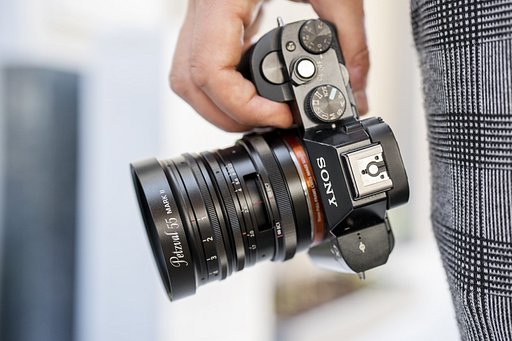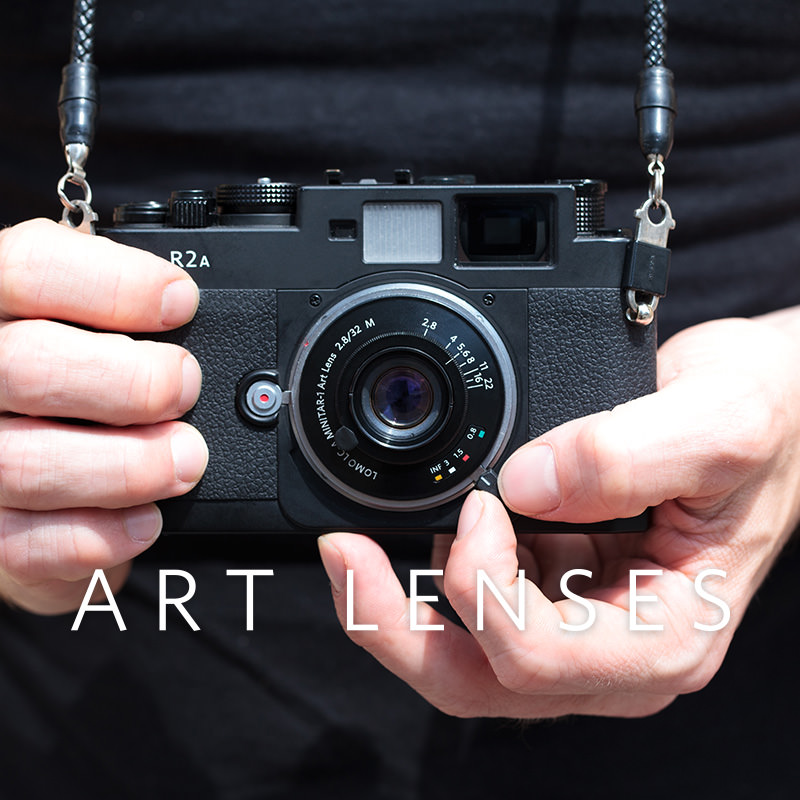Creators in Focus: Tactile Processes & Ecological Bonds with Edd Carr
2Our new Magazine series, Creators in Focus, turns to creative minds from diverse disciplines whose work carries the spirit of analogue: tactile in process, rhythmic in pace, and shaped by time.
Through alternative analogue processes, UK-based artist and researcher Edd Carr explores the cyclical impacts of environmental crises on human relationships. Soil, waste, vegetation, food ingredients – these are all tools Edd uses to create insightful work, may it be through photos, moving images, or installations.

Hi, Edd! Welcome back to the Magazine. Can you tell us what you’ve been working on recently? How has your art grown since our last talk in 2024?
I would say in my personal work I'm now focusing on longer form pieces – so gradually trying to move away from animated shorts and instead making use of 8mm and 16mm, incorporating ideas around essay film and narrative.
For example, I'm currently working on an essay film – For Many They Grow Up Frightened – that follows the trajectory of the Tees River from source to sea, as an analogy for ecological collapse in parallel with toxic romantic relationships. The 16mm stock is from the 1950s, and is processed in rusted metal collected from the river and water from the source. By extracting the iron you can activate the silver and develop the film.
What themes have you been exploring in your art, and what mediums have you been using?
I tend to look at themes such as ecology, environmental trauma, species extinction, and so on – typically embodied in a particular place or ecosystem. Typically this is the North York Moors – an upland landscape in the UK where my family has lived for hundreds of years. I am fascinated by the ecological and social history of the landscape, as well as the folklore, so I try to combine these various aspects into my work.
This ties to the mediums I use, as I incorporate the landscape itself. So for example, I am working on a film shot across the four seasons on the moorland. Each part will be shot and processed in the plants and elements of the season pictured.
Aside from the Sustainable Darkroom, you’re also known for your moving images work such as the cyanotype animation for alternative metal band Deftones recently. What got you into this art form?
The first time I did cyanotype animation was for a film I was making called A Guide to British Trees, where a person dies and is reborn as a tree. I wanted to cycle through the four elements – air, earth, water, and fire – during his rebirth. I was struggling how to represent air visually, whereas with earth for example I had buried film stock in soil, and fire I physically burnt frames.
So with air I chose cyanotype, due to its iconic blue/white palette being close to the colors of our sky. Simple, I know! I was then commissioned to make an entire cyanotype animation for a music video a few years later, and since then it has been a regular part of my commercial work. I don’t use it that often anymore in my personal work, unless I need to animate on an unconventional surface – such as my film DOGS ON FIRE which was animated on Amazon packaging.
What’s the charm of cyanotypes and other alternative analogue processes for you?
Beyond the immediate charm of seeing the prints appear live in the developing tray, I am drawn to the physicality of analogue. I started out doing digital photography, and when dealing with themes of ecology, increasingly felt that the medium was making me increasingly disconnected from the living world.
Therefore I adopted analogue processes as a way of feeling more materially connected, and allowing me to incorporate natural materials into the actual process of creation, instead of them just being a subject through the lens.
Through these alternative processes you also explore personal experiences and trauma, connecting it with the larger topic of the environment, climate and its effects on human relationships. Can you tell us how you developed this personal connection with analogue photography, and the importance of exploring these topics through one’s art?
I’m sure one can effectively communicate issues of environmental crisis and personal trauma through digital mediums – but with so much of our lives now spent in the digital realm, as an artist I needed to ground myself via analogue processes. When I made the transition, I was reading a book by Chet Bowers called Let Them Eat Data, which critiques digital technology as limiting in helping us understand nature due to its sensory limitations (only sight and sound), amongst other things.
This spurred me to use analogue, as a multi-sensory medium – especially when working with it directly – as well as the ability to incorporate natural materials, and further enhance an understanding of ecology through media.
Talking about your intensive moving images, what’s your creative process like and how many hours do you usually work on a project?
The animation processes I use are incredibly labor intensive, as I am printing each frame. So for 1 second of footage, I typically need to print 1 A4 page (12 frames per page). So for a 1 minute video at 12fps, I am printing 60 A4 pages. The first commission video I made in this style was a music video for Tycho Jones, and it was about 5-600 frames in total. This took me three months to shoot, edit, print, and finalize. More recently I have streamlined the process – for example, with Deftones, I had only a week to finish it for the release deadline. So I printed all the frames across two days – however, I didn’t sleep!
Other processes such as animating on wood or shells or waste materials can take a lot longer. For example, I did a clip on seashells for my documentary I AM A DARKROOM, which took 2 days for only a few seconds. At the moment I’m working on an animation on land rights in Yorkshire, and plan to animate entirely on oak leaves and wood. That will be a lot of work no doubt!
You've also been able to present your work through installations. What are the major considerations you think of when presenting in this format?
For the installations MUST APPEAR DEAD and COME AND SLEEP, I wanted to create a sense of unease as both works detail themes of violence, trauma, and ecological crisis. Typically I have created sculptural elements to complement the moving image works – for instance, in MUST APPEAR DEAD, as the animation is made using my homemade silver emulsion – using plant gelatin instead of cow – I made a 1:1 replica of a cattle bolt stun gun from the plant gelatin.
This sculpture then degraded over time. Similarly in COME AND SLEEP, I created large format cyanotypes that mimicked the flags of Shinto shrines, toning them with mugwort – an edible plant that was traditionally used in Ainu rituals in Japan, and now commonly flavors foods such as Mochi.
What were some ways you've created the ambience that fits the themes you explore?
In MUST APPEAR DEAD, I chose to use an old CRT television to display the work, that was purposefully small in comparison to the room it was in. The room was then spot lit so mostly dark, and one had to approach the TV and look closely for the subject matter to be fully revealed. This gave it the ambience of a hostile environment, such as an interrogation room, as a means to make the audience uncomfortable.
Audio is also a huge part – for me, having the audio on speakers in an isolated room accentuates the themes of the work. Ultimately, these types of works I feel are made to be viewed once, as whilst haunting, I hope they leave an impression on the viewer, prompting reflection on the themes of ecological crisis or violence to animals.
Of the art you’ve done so far, is there one that stands out to you as the most important or most memorable one you’ve had to work on? What’s the story behind it?
Hard to say – but there are two moving image works that probably define the breadth of my work. The first is from my personal work, YORKSHIRE DIRT, an experimental short about life in the countryside where I grew up – and how routine violence to the land and nonhuman animals is hidden behind a mask of pastoral idealism. The entire film is printed on soil that I dug up from an old mining site in the hills behind where I grew up, using an ink transfer method.
Secondly from the commission end is I AM A DARKROOM – the experimental documentary I made for fashion photographer Tyrone LeBon, for his Reely and Truly film series. It took me about a year to complete, and documents different people in the Sustainable Darkroom, using a huge variety of low-toxic processes and analogue techniques. I wanted to depict the motivations behind the sustainable revolution in analogue photography, without it falling into traditional documentary territory.

Do you have any tips for analogue or non-analogue photographers who’d like to start experimenting with alternative processes or even moving images?
My main advice would be that it may seem daunting, especially if you’ve never been exposed to analogue before, but a lot of the processes are extremely accessible and easy to use – so give it a go! If you’re anxious about the cost, something like cyanotype works out very cheap per print, and doesn’t require an analogue camera – so start there.
And beyond that, if you want to try the Sustainable Darkroom processes such as developing in plants, then be assured that you will get results – it seems crazy at first that you can process in natural materials, but you can get just as good an image. Finally, if you have a seemingly out-there idea, such as burying film in soil as I have done – then the best thing to do is to just try it out and see what happens!
Lastly, do you have any exhibitions, projects or other events you’d like to share with the Community?
As I said, I’m working on a film about land rights in the Yorkshire Moors with Animate Projects, to support the Right to Roam in the UK. In addition, The Sustainable Darkroom has just launched its latest book, Back to Basics Vol. 2, which looks at processing film in rusty iron, food waste, sugar-based darkroom chemistries, and more!
Analogue endures through material processes, lived rhythms, and practices that ask us to slow down. Creators in Focus follows these sensibilities beyond photography, through voices like Edd’s that keep analogue alive across disciplines.
We'd like to thank Edd for sharing his art and stories with us! To view more about his work, visit his Instagram page, YouTube channel, and website.
written by sylvann on 2025-11-15 #culture #people #videos #alternative #cyanotype #moving-image #edd-carr #creators-in-focus #sustainable-darkroom































No Comments